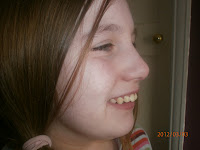Camera Shots:
Very long shot (VLS) -
The very long shot gives the viewer 'geography'
Long shot (LS) -
Takes in the whole height of the person. Doesn't show as much background as VLS but it does show enough to show the subjects location.
Mid shot (MS) -
The mid shot cuts off at the waist.
Head and shoulders shot (HSS) -
Shows only the head and shoulders of the subject
Close Up (CU)
Focus in on the subjects face - pay more attention to facial expressions
Extreme close up (XCU)-
Very intimate shot.
Over the shoulder shot (OTSS) -
Shot from behind, looking over the subjects shoulder
Camera angles
High angle -
Camera is elevated above the action using a crane to give a general overview
Low angle -
Increase height and give a speeded motion. The background of a low angle shot will tend to be just sky or ceiling.
Eye level -
Camera is positioned as though it is a human actually observing a scene
Canted angle -
Camera is tilted.
Transitions
Fade -
Fades the shot to a single colour, usually black or white. Usually signal the beginning and end of scenes
Dissolve -
A gradual fade from one shot to the next
Wipe -
Progressively replaced by another shot in a geometric pattern. Often have coloured border to help disinguish shots
Cut -
Cutting straight from one shot to another
Reflective comments
Reflective comments
For our film noir we will most probably include eye level shots and high level shots. This will help us show our femme fatale having the most powerful position. We will also be using eye level shots to show the perspective of each character. We are unlikely to include many transitions apart from cuts throughout our OTS, apart from the first shot fading in. We are also hoping to include many close ups to help show emotions.










